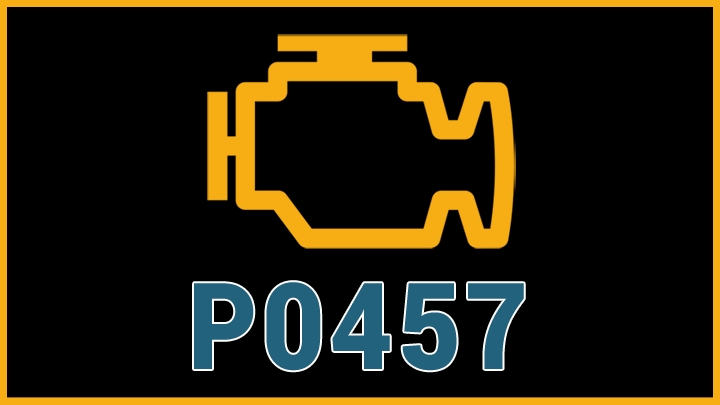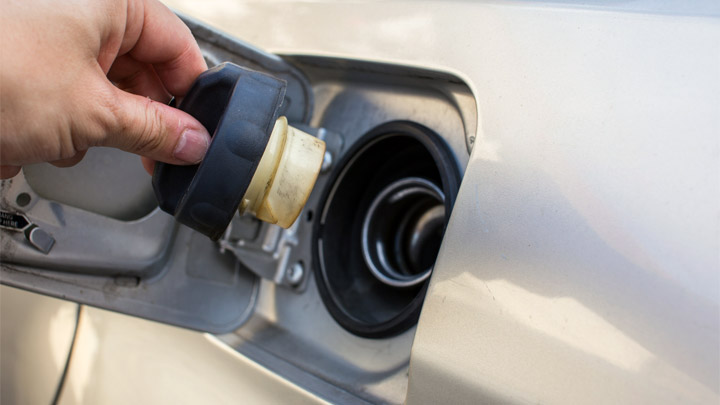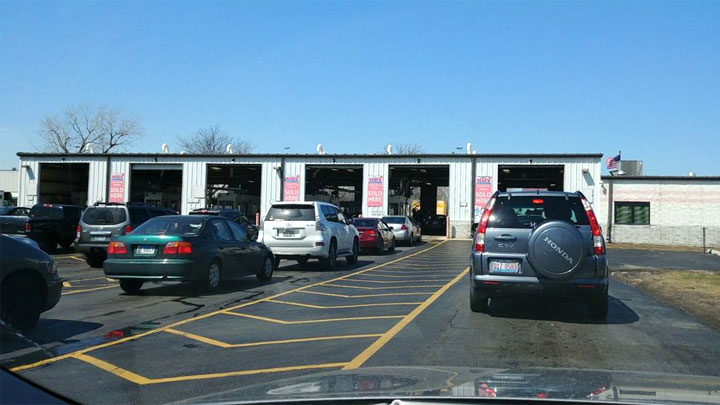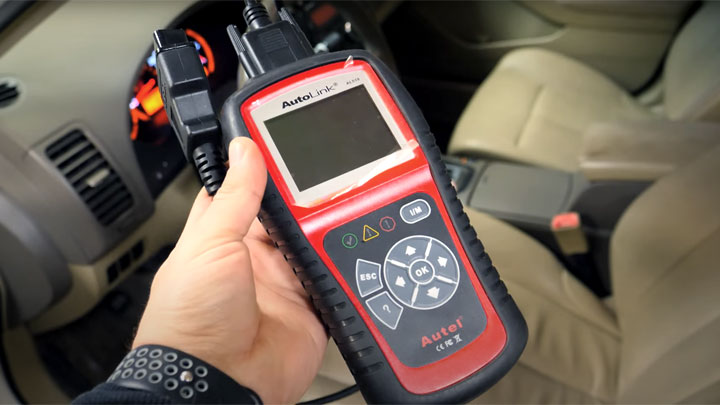P0457 Code (Symptoms, Causes, and How to Fix)
A check engine light conjures thoughts of major mechanical issues and expenses. But some faults are far less worrisome than others. This is a point that is expertly illustrated by analyzing DTC P0457.
Read on to learn what can cause a P0457 code, the symptoms you may experience, and how to resolve it (hint: it’s often an inexpensive or even free fix).

What Does Code P0457 Mean?
Diagnostic trouble code P0457 is largely indicative of a significant vacuum leak within a vehicle’s evaporative emissions system.
In the majority of cases, this code simply indicates that a vehicle’s gas cap has been left loose, or is missing entirely. However, this same code can also be indicative of other leaks within a vehicle’s evaporative emissions system.
To understand the root cause of DTC P0457, one must first understand the nuances associated with the evaporative emissions control system. This system is designed to recirculate unburnt exhaust vapors into an engine’s intake manifold where they are burnt in their entirety, thereby reducing a vehicle’s carbon footprint.
A vehicle’s evaporative emissions system operates off of the principle of vacuum to prevent fuel from evaporating into the atmosphere. However, this safeguard is significantly compromised when a leak of one type or another presents itself, as is indicated by the logging of diagnostic trouble code P0457.
Related: Code P0452, Code P0453, Code P0455, Code P0456
Symptoms of Code P0457
In the vast majority of instances, diagnostic trouble code P0457 is not accompanied by any underlying drivability issues. Quite the contrary, most symptoms associated with this trouble code are superficial in nature.
The following are the most common symptoms associated with DTC P0457.
- Check engine light
- Smell of gasoline vapor
- Slight reduction in fuel economy
Causes of Code P0457

In the majority of cases, diagnostic trouble code P0457 is caused by a loose gas cap. This condition causes a loss in vacuum within a vehicle’s evaporative emissions system. As such, a system leak is quickly registered and is ultimately logged as DTC P0457.
A cracked or otherwise damaged gas cap can also cause similar issues, and serve as the root cause of DTC P0457.
Other potential causes of DTC P0457 include a cracked or compromised charcoal canister, and a dry-rotted, split, or cracked evaporative emissions system hoses. Both of these issues cause substantial EVAP system leaks, and are therefore worthy of your attention, should your car display a P0457 trouble code.
Is Code P0457 Serious?

Diagnostic trouble code P0457 is seldom viewed as being serious in nature. This is due to the fact that this code is of the “passive” variety, and has no bearing upon a vehicle’s drivability. This means that your vehicle should continue to operate and drive as it always has, even with the presence of DTC P0457.
However, it is worth mentioning that an active P0457 trouble code might serve as grounds for failure, in states where annual vehicle emissions testing is mandated. This is because DTC P0457 is actually an emissions system code, and identifies an active fault within this system.
In any event, it is important to remedy the underlying cause of DTC P0457 at the first available opportunity. If you do not feel confident undertaking such repairs yourself, schedule an appointment with a trusted service center at the first available date.
How to Fix Code P0457

The following steps can be used as a guide when attempting to diagnose and repair the root cause of DTC P0457. As always, you should always consult factory-specific service literature for your specific vehicle before attempting any such repairs.
#1 – Check For Presence of Additional DTCs
Before beginning the diagnostic process, check to ensure that no other DTCs are present. If any additional trouble codes are present, troubleshoot each before continuing.
#2 – Inspect Gas Cap
You will begin by inspecting your vehicle’s gas cap. Look for signs of damage or wear, while also ensuring that your gas cap is fully tightened to the point of “clicking”.
#3 – Clear Code/Test Drive
With your gas cap firmly in place, you will now clear the offending P0457 trouble code with the use of a scan tool. With this code cleared, take your vehicle for a reasonable test drive, ensuring that no your check engine light does not return.
#4 – Visually Inspect EVAP System
If your vehicle’s check engine light returns, a careful visual inspection of the vehicle’s EVAP system is in-store. Check for signs of distorted or damaged EVAP lines, while also verifying the structural integrity of the vehicle’s charcoal canister.
Replace any such items that are found to be defective.
#5 – Test For Leaks
It will now be necessary to check for any leaks that might be present. This can be done in one of two ways.
A smoke tester can be hooked inline at the EVAP hose’s intake manifold junction. Within seconds, smoke should begin billowing from the offending leak.
Alternatively, a vacuum tester can be hooked inline, and drawn down for testing purposes. Corrective action should be taken to repair any defects that are found.
- P0480 Code (Symptoms, Causes, and How to Fix) - Apr 19, 2024
- Car Temperature Gauge Stopped Working? (Here’s Why) - Apr 15, 2024
- Ignition Coil vs Coil Pack (What’s the Difference?) - Apr 8, 2024
